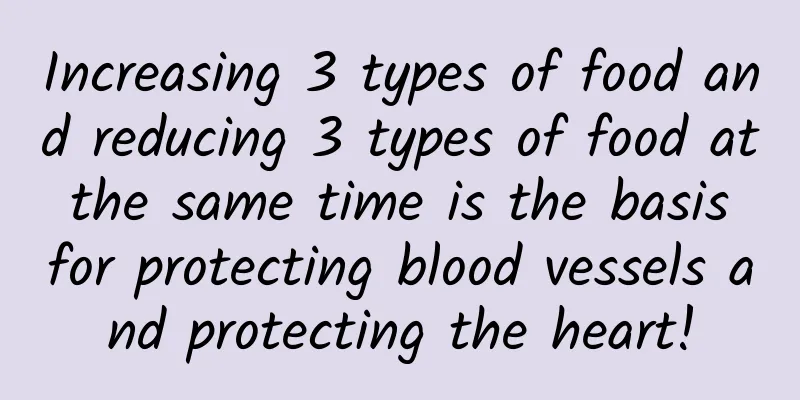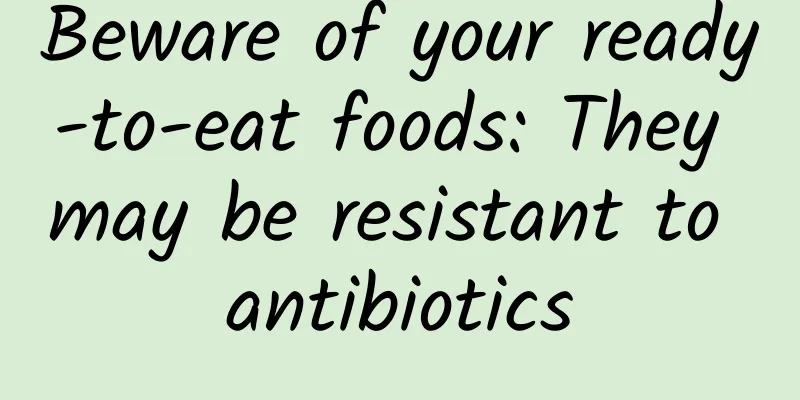Increasing 3 types of food and reducing 3 types of food at the same time is the basis for protecting blood vessels and protecting the heart!

|
A healthy diet is the basis for protecting blood vessels and the heart. A healthy diet is nothing more than three increases and three reductions: increase potassium and reduce sodium, increase coarse grains and reduce fine grains, and increase unsaturated fats and reduce saturated fats and trans fats. 1 Increase potassium and reduce sodium Reducing sodium actually means reducing sodium salt, which is the low-salt diet that we usually promote. The main component of the salt we usually eat is more than 90% sodium chloride (NaCl). The "Dietary Guidelines for Chinese Residents" recommends that we should not eat more than 6 grams of salt per person per day, which is equivalent to the amount of salt in a beer cap. The "Guidelines for the Prevention and Treatment of Hypertension in China" recommends that people with high blood pressure should not eat more than 5 grams of salt per person. But in reality, most of us eat 10-12 grams of salt, far exceeding the healthy salt intake standard recommended by the "Guidelines". Long-term high-salt diet will significantly increase the risk of high blood pressure, especially in our country, most people are salt-sensitive and more susceptible to the effects of high salt, so the number of people with high blood pressure remains high, at around 300 million. Hypertension will significantly aggravate atherosclerosis and eventually cause cardiovascular and cerebrovascular diseases, so a high-salt diet will cause vascular damage and heart damage. In contrast to sodium salt, potassium salt does not increase the risk of high blood pressure. A certain amount of potassium chloride (KCl) is used to replace part of sodium chloride (NaCl). This is low-sodium salt (70% sodium chloride + 30% potassium chloride). This low-sodium salt not only tastes salty, but most importantly, it reduces the vascular and heart damage caused by high sodium salt. Therefore, to protect blood pressure and heart, start by increasing potassium and reducing sodium. In addition to white cooking salt, sodium salt also includes mustard, pickles, kimchi, soy sauce, noodle sauce, bacon, bacon, ham and other salty foods. Basically, all salty foods have high sodium salt content. In addition to the appropriate amount of potassium chloride in low-sodium salt, potassium salt mainly refers to vegetables, fruits, and coarse grains in life. These foods can not only supplement potassium salt, but also supplement dietary fiber, minerals, electrolytes, vitamins and other elements that are beneficial to blood vessel protection. 2 Increase coarse grains and reduce fine grains As our living standards improve, our food becomes more refined. Modern people mainly eat refined grains such as white flour buns and rice. Coarse grains are no longer popular, unless you go to a farm to eat something new. A study published in The Lancet in 2019 showed that in 2017, the number of deaths from cardiovascular diseases worldwide due to excessive intake of refined grains and insufficient intake of coarse grains reached 3 million. So why does eating too much refined grains lead to cardiovascular disease? Refined grains have a lot of crude fiber and germ removed, so a lot of grain fiber, minerals and vitamins are lost. As a result, refined grains are digested quickly and absorbed quickly after entering the gastrointestinal tract, and glucose is released quickly, which increases the risk of cardiovascular diseases such as diabetes and hyperlipidemia. Coarse grains can provide more dietary fiber, B vitamins, minerals such as calcium, potassium, phosphorus, iron, and healthy plant compounds, which are beneficial to the prevention and control of overweight, the three highs, and cardiovascular and cerebrovascular diseases. Observations have found that compared with those who consume too much refined grains, people who consume less refined grains have a 35% lower risk of myocardial infarction, cerebral infarction, angina pectoris, heart stents, and heart bypass surgery. The "Guidelines for China's Healthy Lifestyle to Prevent Cardiovascular and Metabolic Diseases" recommend that eating more whole grains can help reduce the risk of obesity, insulin resistance, atherosclerotic cardiovascular disease and death. Therefore, we reduce the amount of refined grains such as white rice and steamed bread for three meals a day, and gradually increase the amount of coarse grains such as corn, millet, beans, brown rice, oats, and sweet potatoes, potatoes, yams, pumpkins, etc. Coarse grains account for 1/3-1/2 of the entire staple food. 3 Increase unsaturated fat and reduce saturated fat and trans fat The above-mentioned increase in potassium and reduction in sodium, increase in coarse grains and reduction in fine grains are easy for everyone to understand. Too much saturated fat will increase the risk of hyperlipidemia, produce more "vascular garbage", aggravate atherosclerosis, and increase the risk of cardiovascular and cerebrovascular diseases. Trans fatty acids mainly refer to: Western fast food, hamburgers, pizza, fried chicken nuggets, French fries, etc.; pastries, puff pastries, cream cakes, puffs, donuts, sandwich biscuits, wafer biscuits, etc.; fried foods, fried dough sticks, French fries, potato chips, etc.; desserts, ice cream, ice cream, milk tea, etc. And packaged foods with words such as artificial fat, artificial butter, margarine, artificial vegetable butter, vegetable butter, vegetable cream, creamer, cocoa butter substitute, edible hydrogenated oil, shortening, vegetable fat powder, etc. on the outer packaging. Excessive intake of trans fatty acids will increase low-density lipoprotein cholesterol, a bad blood lipid, increase platelet aggregation, increase alpha lipoprotein, and increase body weight, thereby significantly increasing cardiovascular risk. An appropriate amount of unsaturated fat is beneficial to blood lipid metabolism and the prevention of atherosclerosis. Therefore, the oil we eat should be mainly vegetable oil, such as olive oil, linseed oil, rapeseed oil, peanut oil, soybean oil, etc. Of course, even vegetable oil should not be too much. It is generally recommended that each person should not exceed 25 grams per day. In short, to protect your blood vessels and your heart, start with three increases and three decreases in your three meals a day. This is the basis for unobstructed blood vessels and a healthy heart! |
Recommend
Why does the ovary fail prematurely? Six reasons are the key
In real life, more and more female friends are su...
Don't play with your phone as soon as you open your eyes! Don't!
You may have heard many people say "Don'...
How much fat should women consume in a day?
No matter what kind of food it is, people should ...
What are some tips for women to quit smoking?
Everyone knows that smoking is harmful to men'...
shock! Losing weight can cause women's breasts to sag
Every woman wants a well-proportioned figure, but...
Is 16mm left after medical abortion considered large?
Medical abortion is a method of abortion chosen b...
Will hemorrhoids during pregnancy heal after giving birth?
During pregnancy, in addition to proper exercise,...
What is the sound of panting?
Many people are wondering why women moan during s...
What Chinese medicine should I take for metrorrhagia?
Many women are troubled by the symptom of metrorr...
Are dark circles related to gynecology?
Dark circles are a common condition and are gener...
Is candida contagious?
If the bacteria Candida albicans occurs, it needs...
Sunny Side Up: 2022 Instagram Trend Report
1. Fashion and Beauty Minimalist fashion reigns s...
How to choose Nordic style furniture? What kind of furniture is suitable for Nordic style?
We all know that Nordic style is a popular decora...
Is there a line on the T-zone that means you are pregnant?
Menarche is a sign of a woman's maturity. Mat...
What is the best thing to eat during confinement?
After giving birth, women will spend about a mont...









